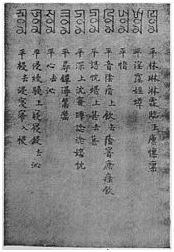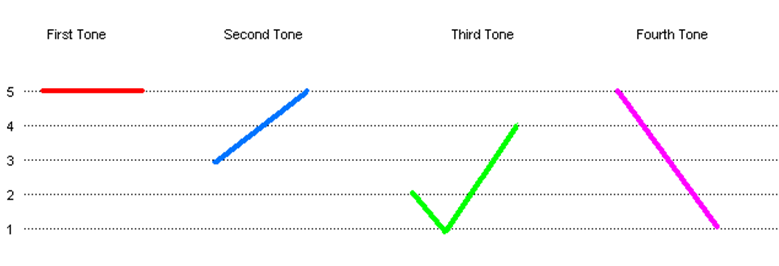Some stories about our Japanese Courses
Hi everyone, 皆さん、今日は。
Our Beginners 1 and Beginners 2 had the written (and writing) tests in their final week of the courses. The majority of the students prepared and responded well. Especially the results of the latter group were all pleasing or excellent. As for other class activities, apart from those with the regular textbooks and CDs, I showed episodes from the long series of “Japanese for Beginners” in most of the lessons with a bit of revision. The topics were: asking for directions, obtaining what you want in shopping, introducing yourself, asking time, etc. Each episode was useful, effective, intelligent, cultural and fun to watch.
In the JLPT N2, apart from working with the books/exercises of the Test, we read, comprehended and commented for some intelligent or informative articles from Japanese newspapers. One was an article of an executive of Misawa Homes Co. Ltd (Asahi newspaper, 17.9.11) about the importance of teaching (his) children to be creative, self sufficient, independent by developing survival skills that esp. for domestic needs, e.g. cooking, fixing bikes, sowing. He wants teach for/as his value since his father had taught him in his childhood.
Other article (Asahi newspaper, 17.9), which I showed to other classes too, reported about Japanese multi-nationals’ new economic activities around the world. The reporter wrote the article at International Motor Show in Germany. Three Japanese multi-nationals that produce textile and industrial fibers (as part of their products), i.e. Tore, Teijin and Mitsubishi-reiyon, are taking the top three in the global market for the production of fiber carbon being used for transport related industries (i.e. automobiles and aircrafts in particular). Their total share takes one forth of the world’s market. Companies that use the above carbon fiber include BMW, VW, US airlines, French Airbus and German Daimler. According to the report, use of carbon fiber greatly reduces the weight of vehicles/aircrafts, energy needed (fuel, electricity etc) and costs/time compared to past practices and carbon fiber is 10 times tougher than steel for such use.
For practice of speaking telephone numbers etc, I used the big advertisement page (Asahi newspaper) of a movie “1911” played by Jackie Chan that was shown at many major cinemas around Japan.
Also, I showed the big advertisement page of “Kiite tanoshimu Nihon no Meisaku” (Asahi newspaper, 11.9). (Company: U-CAN, Tokyo) It talks and shows about 16 CDs of narratives of well known works of many Japanese classical and highly known novelists and poets. The dates of those go back to 1887, including Soseki Natsume, Higuchi ichiyo. Narrated by 10 experts.
When our Beginners 2 and Pre-Intermediate 1 started, I introduced Japanese traditional “matcha” (kind of beautiful green tea in tea bags) bought at an Asian food shop and gave a tea bag to each student for their later drinking at home. Also, I showed/informed about Japanese curry paste with a package, i.e the way to make Japanese curry & rice in a nutritious way with a great taste. And I showed the wrapping part of Japanese “natto” package (natto = brown fermented beans) and introduced my recipe that is mixing “natto” with salad (very healthy and refreshing) with a lot of salad, e.g. white radish, alfalfa, lettuce, raw egg and soy sauce. (Usually, in the past, there was/were student(s) in my classes who went to buy esp. curry paste and tried making curry paste after hearing my talk of the above! They liked the food they made/had.)
5.11.11
Japanese Teacher, Toshiko Jackson
Is it difficult to learn Indonesian?
Bahasa Indonesia literally means the language (bahasa) of Indonesia. Indonesia is one of the developing countries with significant economic growth. This makes the country attracts a lot of investors from all over the world to come and to set up businesses. However, some of them find it hard to communicate with the locals and hence need to learn the language.
Is it difficult to learn Indonesian?
Well, there are a few reasons why Bahasa Indonesia is not difficult to learn:
1. The language use Roman alphabet (a, b, c, ….), unlike Korean, Japanese, Mandarin, Arabic which require us to memorize different form of words and symbols.
2. Some of Indonesian vocabularies are derived from Sanskrit, Dutch, English, Portuguese and even Mandarin so you might find it familiar to you.
3. Bahasa Indonesia is not a tonal language like Mandarin or Vietnamese.
4. There is no tenses in Bahasa Indonesia.
So, why not try to learn Indonesian? I am sure you will not find it too hard!
— Tirto
Part A Reading: From impossibly hard to naturally easy


Do you find the Part A OET reading task too hard? You probably don’t have a good system for approaching the test.
This task can seem impossible. You have 15 minutes to read four texts and then answer more than 20 questions. And you have to get the grammar correct too!
I once had a student who had below than average spoken English, and she had a lot of trouble with the writing task too. However, unlike the rest of the class, she found Part A to be naturally easy. Even though English was her second language, she could finish any Part A task I threw at her with minutes to spare. Why was she so good at it?
This was because she had a systematic approach to handling the test – and to do well in the test, you will need to internalize this approach so that it becomes automatic. How do you do this?
Step 1:
Do not read the entire texts! You need to rapidlyscan and skim for certain details that will help you characterize each of the four texts so that you know where to find you answer.
These details include things like:
- Headings
- Author
- Year
- Location
Now you need to quickly give a unique personality to each of the texts so that you can remember which one is which. For example: “Text 1: Spanish study from 1999; Text 2: Statistics from 2005; Text 3: Study by O’Neill et al.; Text 4: Australian Guidelines for approaching asthma”.
Step 2:
Now keywords in the gap-fill will tell you immediately which text you need to find your answer from. The first sentence might read: “Asthma is a common condition. In Spain, _____________ of people suffer from asthma.”Which text are you going to get your answer from?
For more tips on how to develop your systematic approach, feel free to contact any of the teachers at SLS – and don’t forget, practice makes perfect!
Jaime
Old Mandarin

After the fall of the Northern Song dynasty, northern China was under the control of the Jin (Jurchen) and Yuan (Mongol) dynasties. During this period, a new common speech developed, based on the dialects of the North China Plain around the capital, a language referred to as Old Mandarin. New genres of vernacular literature were based on this language, including verse, drama and story forms.
The rhyming conventions of the new verse were codified in a rhyme dictionary called the Zhongyuan Yinyun (1324). A radical departure from the rhyme table tradition that had evolved over the previous centuries, this dictionary contains a wealth of information on the phonology of Old Mandarin. Further sources are the ‘Phags-pa script based on the Tibetan alphabet, which was used to write several of the languages of the Mongol empire, including Chinese, and the Menggu Ziyun, a rhyme dictionary based on ‘Phags-pa. The rhyme books differ in some details, but overall show many of the features characteristic of modern Mandarin dialects, such as the reduction and disappearance of final stop consonants and the reorganization of the Middle Chinese tones.
Classifiers in Vietnamese Language
Classifiers are considered to be one of the most complicated parts of speech in learning Vietnamese language. In a sentence, classifier functions as a noun when it is followed by another noun.
In English we say one pen, two pens, three pens, etc. However, bút in Vietnamese must be accompanied by the classifier cây. Therefore, a pencil in English is một cây bút in Vietnamese. Never do people say một bút, hai bút, but một cây bút, hai cây bút … Similarly, listed below are 3 useful classifiers which are commonly used.
Cái ‘item’ has become one of the most common classifiers for daily life things such as: cái bàn ‘table’, cái chén ‘small bowl’, cái giuờng ‘bed’, cái cửa sổ ‘window’, cái gương ‘mirror’.
Con ‘child’ is a classifier which indicated a single creature such as con chó ‘dog’, con bướm ‘butterfly’, con dao ‘knife’, con sông ‘river’
Bó ‘bunch’, several common terms are bó hoa ‘bunch of flowers’, bó rau muống ‘bunch of morning glory’ and bó lúa ‘bundle of rice’.
Want to Learn Vietnamese? Then You MUST Read This…
Learning a new language can be fun and time-consuming and Vietnamese is no exception. As a Vietnamese teacher, I can understand the difficulty students have to overcome and I am happy to give you some tips to master this very interesting language.
1. Create a schedule to practice Vietnamese for at least 30 minutes per day. As a saying goes, ‘Practice makes perfect’, practice diligently daily will help you become a fluent Vietnamese speaker.
2. Get involved with the Vietnamese community surrounding your living area such as Vietnamese restaurant, grocery store and cultural festival. This will be extremely useful in learning Vietnamese culture and finding people to speak Vietnamese to.
3. Listening to Vietnamese songs and watching movies are good ways to familiarize yourself with pronunciation. Thinking how surprise your friends will be if you can sing a Vietnamese song on some special occasion!
4. Travel to Vietnam. This might be the hardest way but spending time in Vietnam is considered to be the quickest way to learn the language. When you are put in a situation where you have to speak the language to communicate, you can fasten your learning speed tremendously.
– Jenny Lee (Vietnamese Language Consultant)
Is your Mandarin understandable?
Mandarin is a tonal language which contains five tones, which are four tones and a neutral tone (toneless tone). Every Chinese word is composed of a syllable. It is not necessary that every syllable will have all the five different tones, but when it does, each tone usually conveys a different meaning. For mandarin beginners, speaking mandarin in incorrect tones is often one of the major reasons why their Mandarin is not understandable by others. Even when you know the certain Chinese words or phrases very well, if you are not using the correct tones, others may still have little idea or even misunderstand of what you are talking about.
Now let’s have a look at the five tones in Mandarin Chinese (See picture).

Note: the fifth tone is a neutral tone, which is a toneless tone and has no tone mark.
The first tone is a flat tone and it is high but remains level. The second tone is a rising tone. The third is a falling-rising tone (looks like “V”). The fourth toe is a falling tone, and there’s also a neutral tone (toneless).
Take the syllable “ba” for example, the first tone “bā” means “eight”; the second tone “bá” means “to pull”; the third tone “bǎ” means “target”; the fourth tone “bà” means “dad”. Finally, the fifth tone “ba” is an auxiliary word and is often put at the end a sentence to make a suggestion sentence.
Apart from the original tones that most Chinese words have respectively, some words may need to change their tones into other tones in certain phrases. For example, the word “Yī” (meaning one) originally has the first tone, but when it is in the phrase “Yí gè rén” (meaning one person) it should change into the second tone.
So, you can imagine how confusing it would be if we are using incorrect tones in Mandarin Chinese!
Anne Ma (Mandarin Language Consultant)
OET Tips on READING PART B
The Part B reading section is a test of your comprehension ability. It involves two reading passages and respective multiple choice questions. Like many MCQs, there are usually two answers that are right. You have to choose the best one. You are interested in how to nail that one correct answer!
How do I get to the right answer?
1.If you have no idea, go through each of the options and cross off the ones which are definitely wrong. This will narrow your options down to two ususally.
2. If the question refers to a particular paragraph, and is asking you what the general meaning/implication is, this is usually given at the end/ opening sentence. If not, it’s what each of the sentences in the paragraph have in common. i.e. what it is trying to say collectively through the supporting sentences within the paragraph.
3. Usually the statements that are extreme or too precise are wrong. e.g. ALL A are B. A are always B. A is extremely B. etc Unless, directly stated in the paragraph/ article, medicine usually has lots of exceptions and grey areas. So avoid EXTREME/DEFINITIVE statements.
4. To improve comprehension ability, read read read lots of https://somabest.com health related articles. The aim is two fold 1) to read fast 2) to retain more. Susbscribe to health journal newsletters. Browse the health sites given to you in our program.
5. After you’ve read for 1 minute, cover the reading material and try to jot down as many points about the article as you can remember. If you do five of these activities daily, your comprehension skills will improve.
Simple Speaking Tip for IELTS – Know Your Topic
Can you talk for a few minutes on a topic of your choice?
In the speaking component of the IELTS you will be expected to talk about something in front of the examiner for a few minutes. It may not sound like a long time but when you are struggling to find the right words it may seem like an eternity.
It pays to be prepared and the best way to do this is choose a few topics to practise and then build your vocabulary so that you will be able to talk freely without struggling for words.
Pick topics that are interesting to you so that you are motivated to learn the key words that you need and will be inclined to use those words in the future.
If you have the vocabulary then you can concentrate on how you are speaking – clearly and confidently while looking the examiner in the eye and having a relaxed body language.
Simple Speaking Tip for IELTS – The Art of Small Talk
The speaking component of the International English Language Testing System (IELTS) may be the longest 11 to 14 minutes of your life!
It is broken up into three parts with the first part being a general discussion with the examiner that will probably be very close to a real-life situation. That is where the art of small talk comes in!
Small talk is an expression that means light and informal chitchat that covers a whole range of topics and nothing really specific. In a real life situation it is usually used to cover silence between people who may or may not know each other.
If you can master small talk then you are on your way to doing well in part one of your speaking component.
The best way to do this is to practise as much as you can. The good part is that in most English-speaking countries, small talk is considered normal, so you can chat away to the supermarket cashier, the woman at the bus stop, the waiter in the café and everyone will think you are just a very friendly person!



Latest Comments